Freeze warning protection. A brief context to set expectations.
Freeze warning protection: Quick notes
We had a freeze the night of April 8th. The next morning I received an email from Laura in northern Virginia.
About two weeks prior to the freeze she had transplanted broccoli and cauliflower seedlings that had at least two sets of true leaves and were about 6 inches tall.
Laura reported “with temperatures dipping possibly below 28º they now look pretty wilted.” Her beets (only about 1-2 inches high) were wilted as well.
If you’ve gardened a while and don’t live in a tropical climate, you’ve probably experienced the same thing
Laura did. I know I have.
She wanted to know if I thought her seedlings would recover.
I’ve had seedlings recover and go on to produce abundantly. But I’ve also had those that didn’t. Depends on what variables existed during the freeze and what temperatures that particular vegetable can usually withstand.
Things to consider to help you determine if your seedlings need protection.
Knowing the forecast is probably one of the most important things in helping you determine if and how much protection will keep your seedlings safe.
In early spring you can still have a freeze. It helps to keep an eye on the weather forecast to be ready.
Heavy rains can demolish new seedlings as well as a freeze.
A mist or gentle rain is fine, but heavy rain can in most cases ruin new seedlings especially delicate ones like lettuce. More so if they’re still in an open flat or pot with no protection.
If already transplanted – they can receive a certain amount of protection from mulch. I’ve found that leaf mulch works especially well for this.
Consider more than the temperature forecasted.
When trying to determine whether or not your seedlings need protection from a freeze there’s still more to consider.
If you’ve not already done a search for what is considered the lowest temperature a vegetable can take without freezing – that would be a good next step.
However, keep in mind that the temperature given is general and can differ depending on what other conditions exist during the freeze.
Broccoli as an example:
Search results for broccoli seedlings were:“lowest temperatures that broccoli seedlings can take 20º for short periods”
“Short periods” would give you/me reason for concern. How long is a short period? I would guess one hour — but the bottom line is do you want to chance it?
And how detrimental would it be if you lost them?
If they were mine and the forecast was below 28º and
I didn’t want to take a chance with them – I’d protect them at least with a row cover fabric. I don’t trust the search results temperature of 20º being ok for broccoli.
I don’t often grow broccoli. If I had lots of hands on experience with it surviving below freezing temperatures – that might change my mind.
If I had a nice layer of leaf mulch on their bed and couldn’t get out to cover them, I think they’d have a good chance of making it if the temperature were not below 20º for longer than an hour (especially if they had already gone through wind, cold and rain).
Based on the search result I’d think Laura’s broccoli would/will recover nicely. (Let us know please, Laura how all are doing.)
Nothing is written in stone with the garden.
You’ll have to make a judgement call depending on how important the seedlings are and based on your experience.
Consider how “tough” your seedlings are.
I germinate my seed inside my enclosed porch. Once germinated the seedlings go outside. If temperatures are below freezing at nights I place them under a make-shift cold frame made from old windows.
If I think the cold frame won’t be enough protection I place row cover fabric over them for extra protection before placing the cold frame over them.
Thus they’re hardened off from day one and have most likely (before the freeze comes) already gone through a variety of weather conditions (heat, cold, wind, rain) – making them stronger. So you’ll want to consider what yours have already been through.
If you’ve already transplanted to the garden – a row cover fabric (of thickness for winter) works well. Weight the fabric to keep the wind from blowing it away.
I usually use bricks or stones along the edges. Have also used J hooks on occasion. (How many you use will depend a lot on how strong the winds will be.)
And a nice layer of leaf mulch can also help protect them.
Using Cabbage as an example
Search results were: “Mature cabbages can withstand cold temperatures as low as 20°F. Seedlings and young plants can withstand a light frost.”
I have some of my best looking cabbage seedlings this year. They’ve been out in lots of cold, wind, and rain. Many had several “real leaves” and were about 4 inches tall.
I knew a freeze was forecast. At first I was not going to cover any of the 3 dozen cabbage seedlings. Without doubt I knew they could take 32ºF.
Early Jersey cabbage seedlings March
Six tiny one inch seedlings had already been transplanted to the garden with a heavy layer of leaf mulch. The pot with the unplanted seedlings was left in the garden unprotected. All those seedlings made it through unscathed.
Changing My Mind
At the last minute before dark I decided to put all the other larger seedlings under the make shift cold frame, even though I felt they’d make it fine.
My reason: These had been started at just the right time. And there was not enough time remaining this spring to get transplants this large before hot weather comes should anything happen to these.
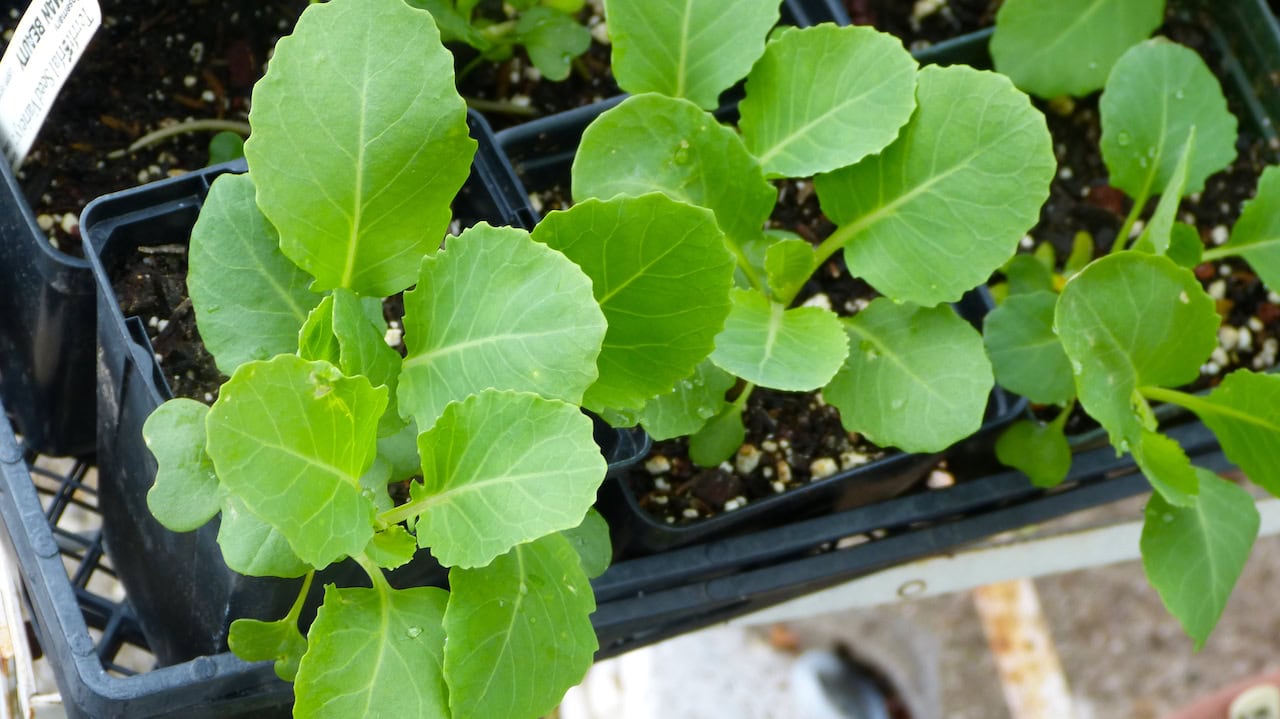
Charleston Wakefield Cabbage seedlings
Cauliflower example
Search results were “lowest temperatures that cauliflower seedlings can take temperatures as low as 40°F (4.4°C) without significant damage. “
In addition – prolonged exposure to 50ºF can cause poor growth.
I don’t grow cauliflower. If I did, and had no hands-on experience, this information would tell me that cauliflower can’t take much cold.
Based on these search results, I would think that Laura might lose at least some of her cauliflower.
Beets
Search results -“Beet seedlings can tolerate soil temperatures as low as 27°F once they have germinated. Once the seedling emerges and develops cotyledons, it can withstand temperatures as low as 28°F.”
I grow beets.
Although the beet itself can take temperatures several degrees below freezing, the leaves can show damage even at 32ºF.
Tops grow quickly so I never cover them in the garden.
(If you grow beets you probably already know how delicious the tops are when sautéed.)
Final Thoughts
I’ve given some basic steps to follow when trying to determine if your seedlings need protection from freezing temperatures.
After those, your hands on experience will help you make the final decision about what to do. And if you make the wrong call you’re in good company. Most all of us have at some point in time.
In her follow up email, Laura wrote:
“You live and you garden and you learn right? That’s what I really love about your attitude towards gardening—you say just try it and learn from it! That takes all the stress out of gardening!”
That made me smile!
Wishing you a growing season with no stress involved!
Theresa
A short mention of Freeze warning protection helps readers follow the flow.

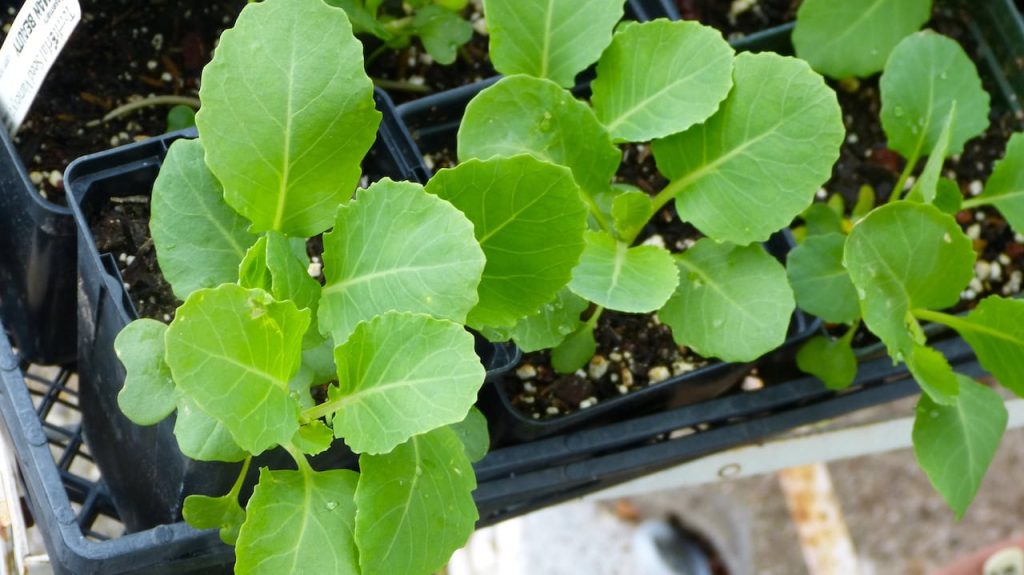

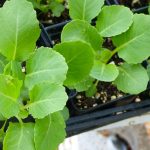

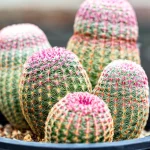


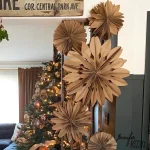




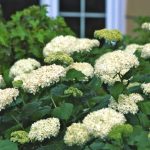
I’ve been thinking about this— Freeze warnings always get me worried about my little basil plants. Should I cover them with a tarp tonight or just cross my fingers? The patio tomatoes might need moving indoors.